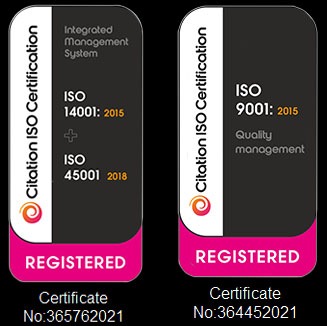
Rig Zone's Matthew Veazey Interview With CeraPhi Energy CEO Karl Farrow On Geothermal Energy A Different Kind Of Renewable Resource
13 May 2021
A topic that has received considerable interest in the oil and gas community recently is exploiting geothermal energy. In April Rigzone presented one company’s insights on the potential for tapping into geothermal via some abandoned oil and gas wells.
Given recent curiosity about geothermal, and to explore geothermal-oil and gas collaboration opportunities, Rigzone has sought out additional perspectives on the renewable resource and will present them in the coming days. One such voice is Karl Farrow, CEO of the geothermal project development firm CeraPhi Energy.
“Geothermal energy is the next and future source of baseload energy and it’s not a struggle against oil and gas,” Farrow told Rigzone. “It’s an important tool in the evolution of how we will produce energy with results and benefits we now demand for a sustainable future.”
Farrow also offered Rigzone his observations on a unique characteristic of geothermal among renewables, who could benefit from sourcing geothermal from abandoned oil and gas wells, and more. Read on for his insights.
Rigzone: What makes geothermal stand out as a renewable resource?
Karl Farrow: Geothermal is the only 24/7 100% clean source of baseload energy, meaning that it can provide continuous energy in theory forever. There are more than 6 billion years of stored energy under our feet, which is primarily the heat from the earth’s core radiating out trying to naturally escape. Geothermal is effectively the core’s heat connecting with natural subsurface water systems that create natural thermal gradients.
In a market context, as a baseload resource geothermal energy is the only renewable resource that does not require ancillary services in order to be integrated into the grid – which is a significant cost and output issue for all variable dispatch resources, including wind and solar. In fact, the ability to produce geothermal energy either inside or within close proximity to populated areas will actually serve to reduce the demand for long-distance transmission and ancillary services.
Rigzone: We keep hearing the term “energy transition.” Where do you see geothermal fitting in with the energy transition, particularly in North America?
Farrow: The exploration of oil and gas has revolutionized the last 100 years of development on earth in both technology and infrastructure. Oil and gas is possibly one of the largest economic sectors globally, with most countries having some kind of business related to it. As we have scaled our global economy over the last 100 years, we have seen a natural negative effect on the environment specifically through energy demand and production. This activity continues. The transition now away from fossil-burning fuels is a natural turning point resulting from our wider understanding of sustainability.
Renewable energy provides the commercial alternative that fills the gap, and geothermal further fills the gap as a baseload source of energy. Importantly, geothermal development is enabled by and relies upon all the expertise and technologies developed within the oil and gas sector over the last century, meaning the existing supply chains, resources and expertise will drive and support this particular element of the energy transition. We will always need oil and gas for certain essential purposes, but if we can position ourselves in a carbon-neutral environment with geothermal as a baseload energy provider, from an energy perspective then a massive shift into a real positive energy transition will occur.
Rigzone: In the context of converting orphaned oil and gas wells to geothermal, who do you see as the primary end-users among industrial, residential, and/or commercial markets?
Farrow: All of the above, specifically with utilization of heat. We currently use a vast amount of energy from electricity to produce heat and cooling. If we were to use just the heat from geothermal efficiently for industrial, commercial, and residential uses more effectively, that in itself would make a significant impact on our ability to decarbonize. Having a baseload energy working alongside other forms of renewables such as wind and solar will make a significant contribution towards immediate carbon reduction targets, while additionally, the repurposing of oil and gas wells represents a new tool for the management of plugging and abandonment (P&A) obligations and liabilities.
Within the energy sector geothermal can provide targeted energy services across upstream, midstream, and downstream sectors, while from the investment perspective they place hard assets in the ESG (Environmental, Social, and corporate Governance) column which addresses a clear and present mandate.
Finally, stranded well sites and/or fields offer energy supply solutions which could support the development of micro-grid and/or small energy hubs which, as mentioned above, can significantly reduce the cost, stability, and reliability issues with the power grad and transmission system.
Rigzone: What are some misconceptions that someone in the oil and gas sector might have regarding geothermal? In other words, what might seem far-fetched about geothermal but actually is not?
Farrow: I think there are three key points to mention with respect to misconceptions about geothermal energy. Perhaps the biggest misconception is that geothermal energy can only be produced where volcanic and natural fault systems are present. This assumption is primarily due to the fact that most conventional geothermal projects have been historically developed where thermal gradients are relatively shallow. However, geothermal energy production is simply the use of heat and the heat is everywhere. We have drilled millions of wells around the earth over 100-plus years in oil and gas, and we know from logging these wells that the deeper you drill the hotter it gets and thus accessing the right temperatures anywhere can be achieved.
In simple terms, by just focusing on accessing and transferring heat and inducing an activator fluid you then produce thermal energy through vapor expansion which is sufficient to turn a turbine. The hotter the temperature, the greater the thermal reaction when fluid is introduced.
Second, there are misconceptions that stem from the “hybrid” structure of geothermal energy production: the oil and gas sector tends to evaluate geothermal from the standpoint of their risk/reward perspective while the electric utility sector tends to look at things from their view of power markets, transmission, etc. What we are talking about is a hybrid supply chain which sources electricity and heat energy directly from the borehole to the customer or the grid. A clear understanding of this transformation in the physical energy supply chain can then lead to understanding of what the geothermal commercial business model needs to solve for in terms of offtake structuring and financing.
Lastly, we have to remember that these are oil and gas wells – meaning they were never drilled and competed for geothermal production and they will likely be slimmer than we would specify if we were developing a greenfield geothermal site.
So, we shouldn’t expect that a repurposed oil well will replicate the results you would expect from a purposely drilled geothermal well in a geyser zone in California. However, consider the repurposing of oil and gas wells effectively as having pilot test wells or the wildcat already-drilled well – following from which you then have the ability to prove up a new commercial case to help decarbonize a business model on that site and, if commercial, you have scalability and can drill new wells specifically for the production and configuration you require.
Conventional geothermal has greater drilling risk/cost than oil and gas. However, developing low-temp geothermal essentially avoids exploration and production risk by utilizing existing assets and front-end screening of real-time data from those assets.
Rigzone: What are some potential geothermal market-entry/expansion opportunities for oil and gas operating, drilling, service, and equipment companies?
Farrow: From both personal and CeraPhi team experience, having been involved in this now for a number of years, the low-hanging fruit is the repurposing of existing assets if they can be screened, used, and proven commercial. Finding a credible buyer for the off-take, whether it’s an inside-the-fence end user, a grid connection to utility or retail provider, or a new district consumer, is a key factor because that is a fundamental leg of a commercial model. Greenfield projects, I think, will naturally come in time, and most of our initial opportunities are starting with district heating and residential industrial type solutions. You need to have a significant energy off-take to de-risk geothermal. That said, modular and scalable design flexibility represent an important way to matching specific off-take requirements and ring-fence the offtaker’s risks.
Being able to start small and scale up is a great benefit when proving commerciality and stepping into a new sector or venture. Furthermore, design flexibility is an important risk management tool from an oil and gas company and supply chain perspective as it offers the ability to use as much of the existing resources and expertise that exists today without having to over-invest – a big plus.
Rigzone: From a policy perspective, is there anything that local, state/provincial, and/or national governments could do – or avoid doing – to help spur conversion of orphaned oil and gas wells to geothermal?
Farrow: They can begin to reflect a greater awareness now of the potential to transition and repurpose these assets, particularly at end-of-life and in the P&A cycle. While respecting the logical good intention of wanting to use a fossil fuel-based infrastructure to produce clean energy, some may challenge the premise without understanding the opportunities before us. From the well reuse side, ensuring geothermal remains within an oil and gas policy and legislative portfolio is key as well integrity is obviously a critical part of whether or not a given site can be classed as suitable for repurposing.
There will be a natural overlap at some point as to what is considered as still an oil and gas regulated business and what is considered a utility, but we don’t see this as being overly complicated if both parties are pushing for the same results – which should be to extend the use of energy-producing assets for as long as possible towards the production of clean energy. Really what we are pushing for are polices that align with the previously mentioned “hybrid” physical and commercial nature of geothermal, meaning that there really needs to be a regulatory alignment from the borehole to the end-user.




